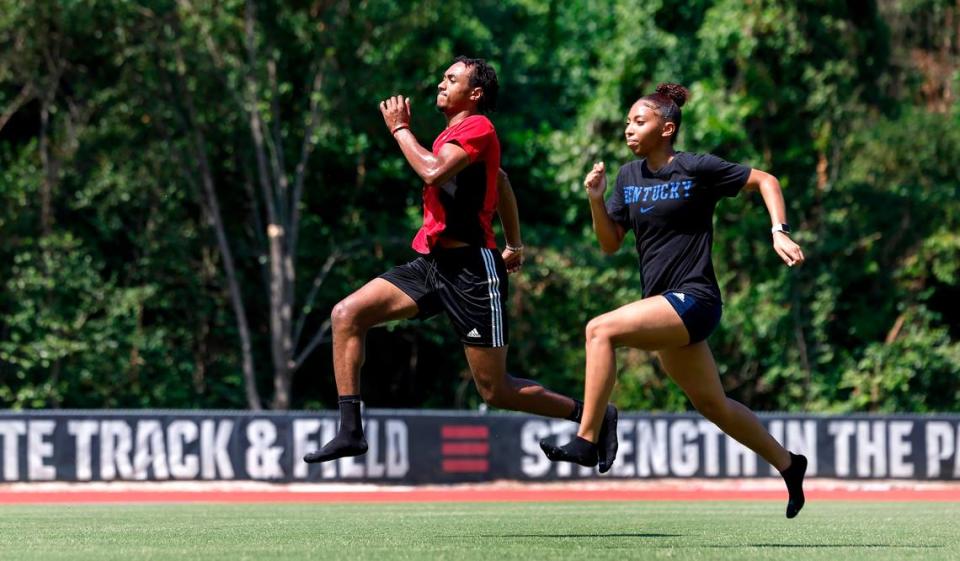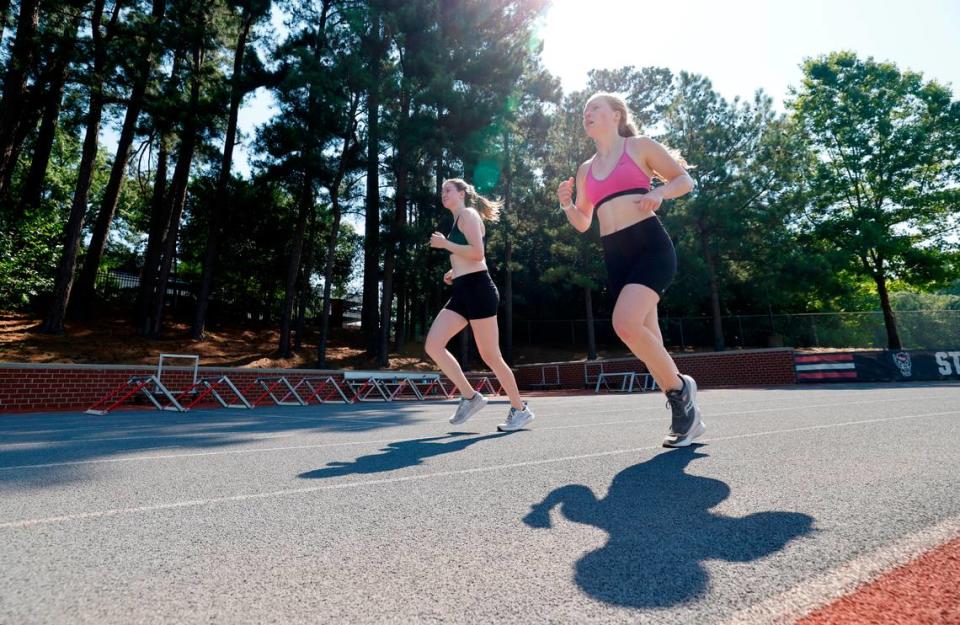Experts discuss essential hydration tips for athletes during the North Carolina heat wave
The N&O Summer Desk is a pop-up initiative to help navigate the season. Whether you’re heading to the beach, mountains or backyard, The Summer Desk is here to guide you. Share your summer pleasures and story ideas with us at summerdesk@newsobserver.com
As North Carolina experiences a relentless heat wave this week, athletes are vulnerable to the dangers of dehydration and heat-related illnesses. Here are essential hydration tips to help athletes stay safe.
How can I tell if I’m not drinking enough water?
Understanding the signs is the first step in staying safe. Watch out for:
▪ Dark yellow urine
▪ Dry mouth and lips
▪ Fatigue and dizziness
▪ Headaches
▪ Muscle cramps
Symptoms may vary depending on age, according to the Cleveland Clinic.
Water vs. sports drinks: What’s best?
For most light or moderate activities, water is sufficient. For intense or prolonged activities, sports drinks can help replenish lost electrolytes and provide energy.
“I think if it’s really hot, there’s some benefit to sports drinks,” wrote Dr. Emily Greenwald, who works as a pediatric emergency medicine physician at Duke. “Salt is transported across the intestines with sugar, and then water follows the salt. So scientifically, it makes sense to do the sugar-salt solution for optimal hydration.”

How should I rehydrate post-workout?
Most people need several hours to drink enough fluids after sweating. But the goal, argues Dr. Greenwald, is to stay ahead of it.
“I think if you are truly over-heated and feeling poorly (dizzy, lightheaded, etc.) then you are way behind and you really need to stop for the day,” she wrote.
Dr. Greenwald said the recommended amount of water varies based on the size of the athlete and how hot it is. But generally, if you’re not urinating every few hours, you’re not drinking enough.

Does the playing surface make a difference?
Yes. Any surface that absorbs heat — synthetic turf, asphalt or concrete — adds to the misery of heat waves. The resulting phenomenon are urban heat islands, which are areas within cities that experience higher temperatures than their surroundings due to minimal tree cover, scarce green spaces, and extensive paved surfaces.
To put it simply, shade makes a huge difference.
In July 2021, the City of Raleigh collaborated with NOAA, the National Weather Service, local museums, and community organizations to map urban heat islands in the Triangle. You can check that project out here.

My child is an athlete. How can I keep them safe during summer workouts and sports camps?
Jordan Clark, who works as a senior policy associate for Duke University’s Heat Policy Innovation Hub, emphasized the importance of “pre-hydration” and said to not underestimate the heat.
He recommends mandating hydration breaks, providing access to water and sports drinks, and considering weigh-ins before and after practice to monitor hydration. That, and more tips, can be found in his study: “A Game Plan for Heat Stress.”
Clark said parents should ask the group or organization in charge what precautions they’re taking regarding the weather.
“Is there a qualified EMT emergency responder?” he said. “How close are they? Are they on-site? What does that scheme look like?
Cooling tubs — essentially ice water baths — are another strategy Clark recommended.
“The most important thing is to be able to get your body temperature down as fast as possible,” he said.

What are some additional resources I can check out?
▪ Dr. Greenwald recommended misting fans as well as this resource on heat stress tips for exercising children from the American Academy of Pediatrics.
▪ CDC heat stress and hydration guidelines recommend hydrating before, during and after workouts and eating regular meals to replace salt lost in sweat.
▪ NCHSAA heat guidelines recommend easing into physical exertion.
As the heat wave continues across North Carolina, staying informed and prepared is essential. By understanding the signs of dehydration, choosing the right hydration methods and following expert advice, athletes of all ages can stay safe and perform at their best.


